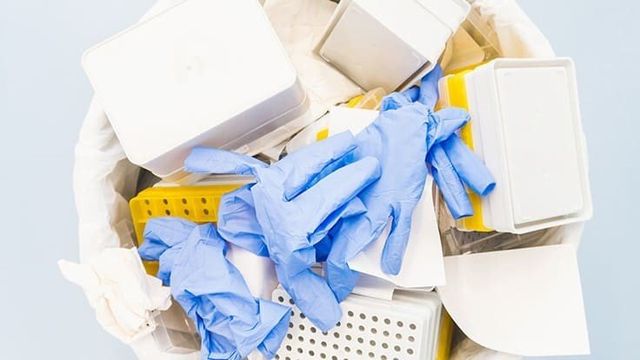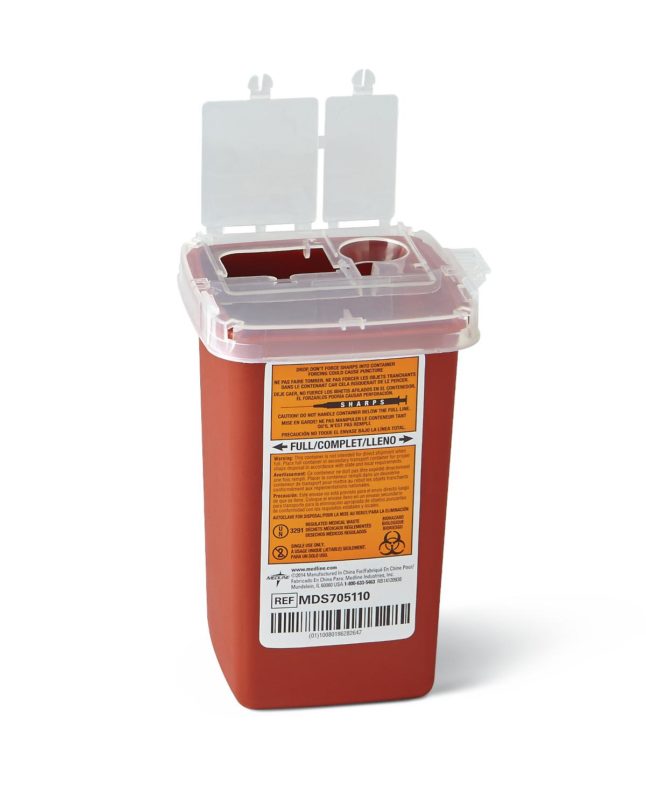Medical Waste Removal Proficiency: Where Service Quality Meets Health Criteria
Medical Waste Removal Proficiency: Where Service Quality Meets Health Criteria
Blog Article
Minimize Prices and Take Full Advantage Of Security: Effective Medical Garbage Disposal Methods
Efficient medical waste disposal methods are critical for medical care centers to lessen expenses and make the most of security. With the growing concern for environmental sustainability and the increasing variety of guidelines bordering waste administration, it is imperative for medical care organizations to adopt reliable and certified methods. By executing proper partition and categorization, efficient product packaging and labeling, safe transport and handling, effective therapy and disposal techniques, and conformity with regulatory standards, healthcare centers can make sure the liable and safe management of clinical waste. In this conversation, we will certainly explore each of these approaches in detail, giving insights and useful pointers for health care specialists to optimize their garbage disposal procedures.

Proper Segregation and Categorization
Appropriate partition and classification are critical components of efficient clinical garbage disposal strategies, guaranteeing the security of health care employees, the general public, and the setting - medical waste removal near me. medical waste disposal services with WasteX. By dividing various types of clinical waste at the factor of generation, healthcare centers can lessen the risk of cross-contamination and possible damage to ecological communities and individuals
One of the crucial consider correct segregation is the recognition and classification of clinical waste. This includes classifying waste into various groups, such as transmittable, dangerous, contaminated, or pharmaceutical waste. Each classification requires certain handling, storage, and disposal techniques to avoid any type of adverse impacts on human health and the atmosphere.
Furthermore, appropriate partition likewise consists of the usage of color-coded containers and labels to plainly determine and differentiate the different kinds of medical waste. This assists medical care workers and waste monitoring employees to easily identify and handle the waste properly. Red containers might be made use of for infectious waste, while yellow containers may be assigned for unsafe waste.
Along with segregation, correct classification also includes the right product packaging and control of clinical waste. This ensures that waste is safely kept and moved without positioning any type of dangers to people or the setting. Making use of leak-proof and puncture-resistant containers, in addition to effectively securing and classifying them, helps to avoid any type of unexpected direct exposure or launch of unsafe materials.
Reliable Product Packaging and Labeling
Efficient product packaging and labeling play a crucial role in making certain the safe and effective disposal of clinical waste. Appropriate packaging is necessary to stop leak, damage, or splilling during transportation and handling. It helps to minimize the threat of contamination and shields medical care employees, waste administration employees, and the setting from prospective threats.
Clinical waste should be packaged in sturdy and watertight containers that are immune to pierce and breakage. These containers need to be effectively secured to avoid any leak. Furthermore, the packaging needs to have the ability to endure the conditions of transport, including temperature variants and rough handling.
Identifying is equally vital as it supplies vital details regarding the contents of the waste and any kind of prospective hazards connected with it. The labels must include the name of the medical care facility, the kind of waste, and any type of unique handling directions. Clear and standard labeling makes certain that waste administration employees can quickly recognize and deal with the waste suitably.
Effective product packaging and labeling additionally aid in the correct segregation and classification of clinical waste. Clear labeling enables very easy identification of various waste streams, such as transmittable waste, sharps, or pharmaceutical waste. This aids in improving the disposal procedure and guaranteeing that the waste is dealt with or gotten rid of in conformity with regulatory guidelines.
Safe Transport and Handling
Ensuring the safe transport and handling of clinical waste is of utmost significance in order to stop any kind of potential health and wellness and ecological threats. Clinical waste, such as sharps, polluted products, and pharmaceutical waste, must be correctly packaged and taken care of to minimize the risk of exposure to dangerous materials and pathogens.
Delivering medical waste requires conformity with stringent guidelines and standards established by local authorities and environmental agencies. These guidelines intend to shield the wellness and safety of workers involved in waste administration and stop the launch of unsafe products right into the setting.
To make certain secure transport, clinical waste should be placed in leak-proof and puncture-resistant containers that are properly secured and classified. These containers need to be safeguarded in a means that stops spills or breakage during transit (medical waste removal near me). In addition, it is critical Home Page to make use of Related Site specific automobiles geared up with suitable security functions to carry medical waste. These vehicles need to have appropriate ventilation and be designed to stop leak or contamination.
Dealing with clinical waste additionally requires appropriate training and adherence to safety and security protocols. Personnel associated with the handling of clinical waste should wear appropriate personal protective devices (PPE) such as handwear covers, masks, and dress to minimize the danger of exposure. They must additionally comply with rigorous health techniques to stop the spread of infections and guarantee the risk-free disposal of waste.
Efficient Treatment and Disposal Techniques
Carrying out ideal treatment and disposal methods is critical in managing medical waste effectively and minimizing potential health and environmental risks. Medical waste, that includes sharps, contagious materials, chemicals, and pharmaceuticals, can pose considerable risks if not managed and thrown away appropriately. There are several treatment and disposal methods available that stick to governing standards and advertise risk-free practices.
One typical technique is incineration, which entails melting the waste at high temperature levels. Incineration works in damaging virus and reducing the quantity of waste, however it can release unsafe toxins into the air otherwise effectively regulated. Therefore, it is very important to use modern incinerators geared up with discharge control innovations.
One more technique is autoclaving, which uses steam and stress to decontaminate the waste. Autoclaving is reliable in eliminating microorganisms and decreasing the volume of waste, but it calls for cautious tracking and maintenance to ensure correct performance. The disinfected waste can then be securely taken care of in a land fill.
Chemical treatment is another alternative, which includes using anti-bacterials or various other chemicals to reduce the effects of virus. This technique is commonly used for fluid waste, such as lab specimens. Nonetheless, it is essential to use ideal chemicals and comply with correct treatments to ensure reliable treatment and prevent ecological contamination.

Conformity With Regulatory Standards
Complying with governing guidelines is important in making certain appropriate conformity with medical waste disposal techniques. These guidelines are implemented to protect public health and wellness, protect against environmental contamination, and preserve office safety. Conformity with governing guidelines is important for medical care facilities, as non-compliance can result in charges, penalties, and reputational damages.
Regulatory standards lay out the proper handling, storage, transportation, and disposal of clinical waste. They give specific instructions on packaging demands, labeling, and record-keeping. These standards additionally address the segregation of different waste streams, such as sharps, transmittable waste, and pharmaceutical waste. Healthcare facilities should make certain that their waste management practices line up with these standards to minimize the risk of direct exposure to hazardous materials and avoid the spread of infections.
To preserve conformity, health care facilities ought to establish extensive waste administration programs that include staff training, regular audits, and recurring surveillance. It is vital to keep up-to-date with any adjustments or updates to governing standards, as methods may develop over time. By remaining educated and carrying out appropriate protocols, healthcare centers can minimize the capacity for regulatory offenses and secure the health and wellness of their team, individuals, hop over to here and the surrounding community.
Verdict
Finally, executing reliable clinical garbage disposal methods is important for reducing prices and maximizing safety and security. Appropriate partition and categorization, reliable packaging and labeling, secure transportation and handling, and reliable treatment and disposal approaches are vital actions to guarantee conformity with regulative standards. medical waste removal. By adhering to these approaches, health care centers can protect the atmosphere and public wellness while also minimizing financial concerns connected with medical waste administration
By applying proper partition and classification, efficient packaging and labeling, risk-free transport and handling, reliable treatment and disposal techniques, and conformity with governing guidelines, health care facilities can make sure the accountable and risk-free monitoring of clinical waste. Red containers may be used for contagious waste, while yellow containers might be assigned for unsafe waste.
Clear and standardized labeling guarantees that waste administration workers can conveniently recognize and manage the waste appropriately. (medical waste disposal services with WasteX)
Clear labeling allows for very easy recognition of different waste streams, such as infectious waste, sharps, or pharmaceutical waste. These standards likewise deal with the segregation of various waste streams, such as sharps, contagious waste, and pharmaceutical waste.
Report this page